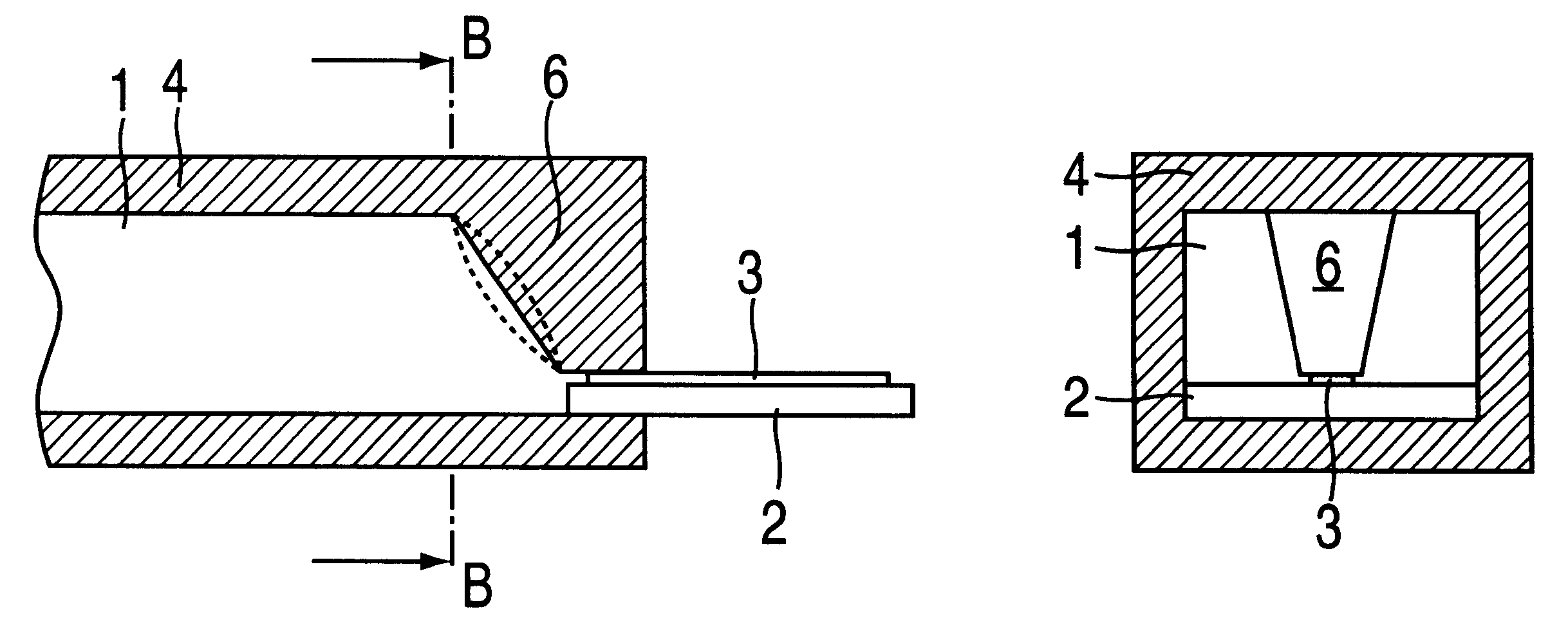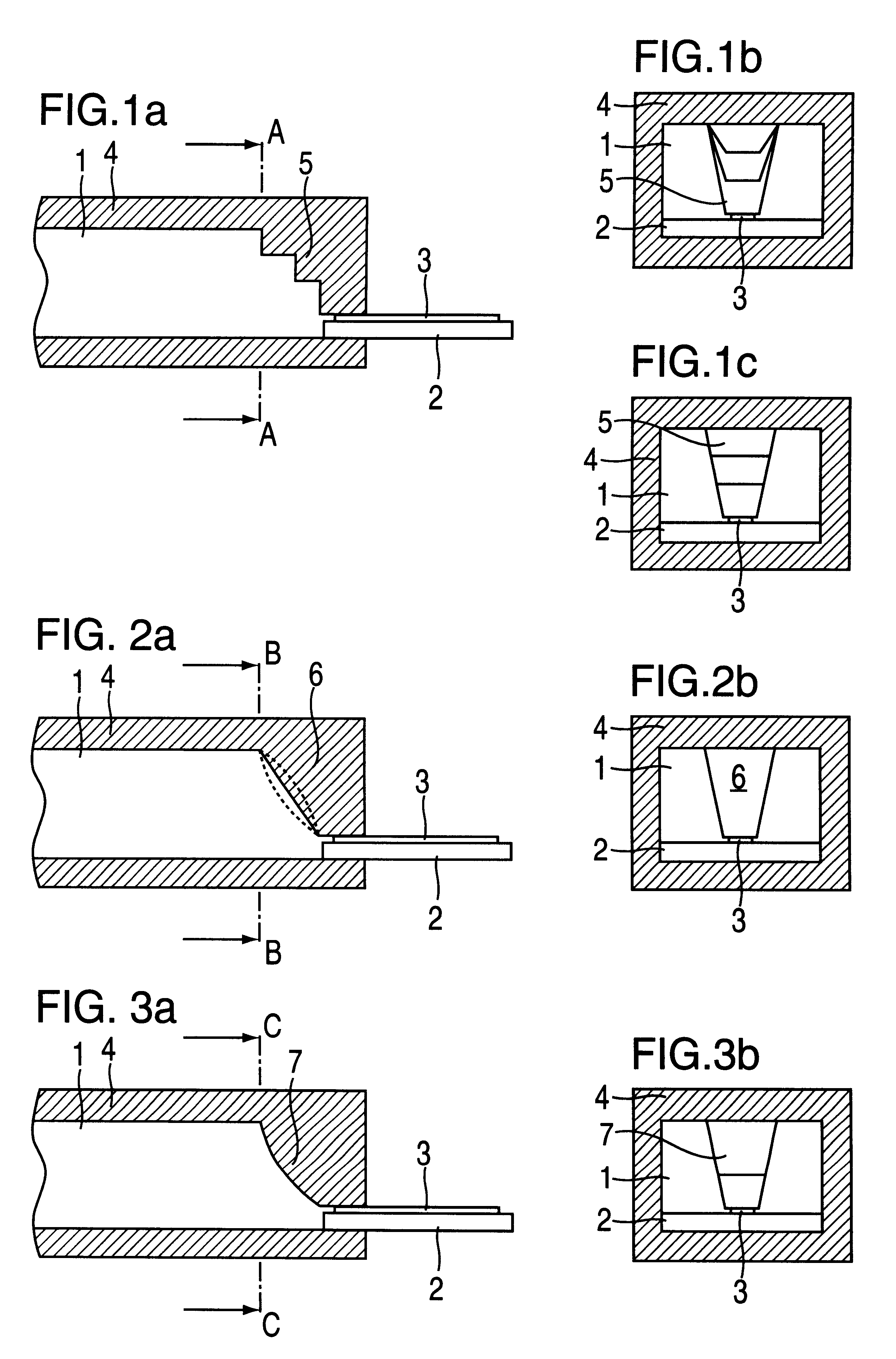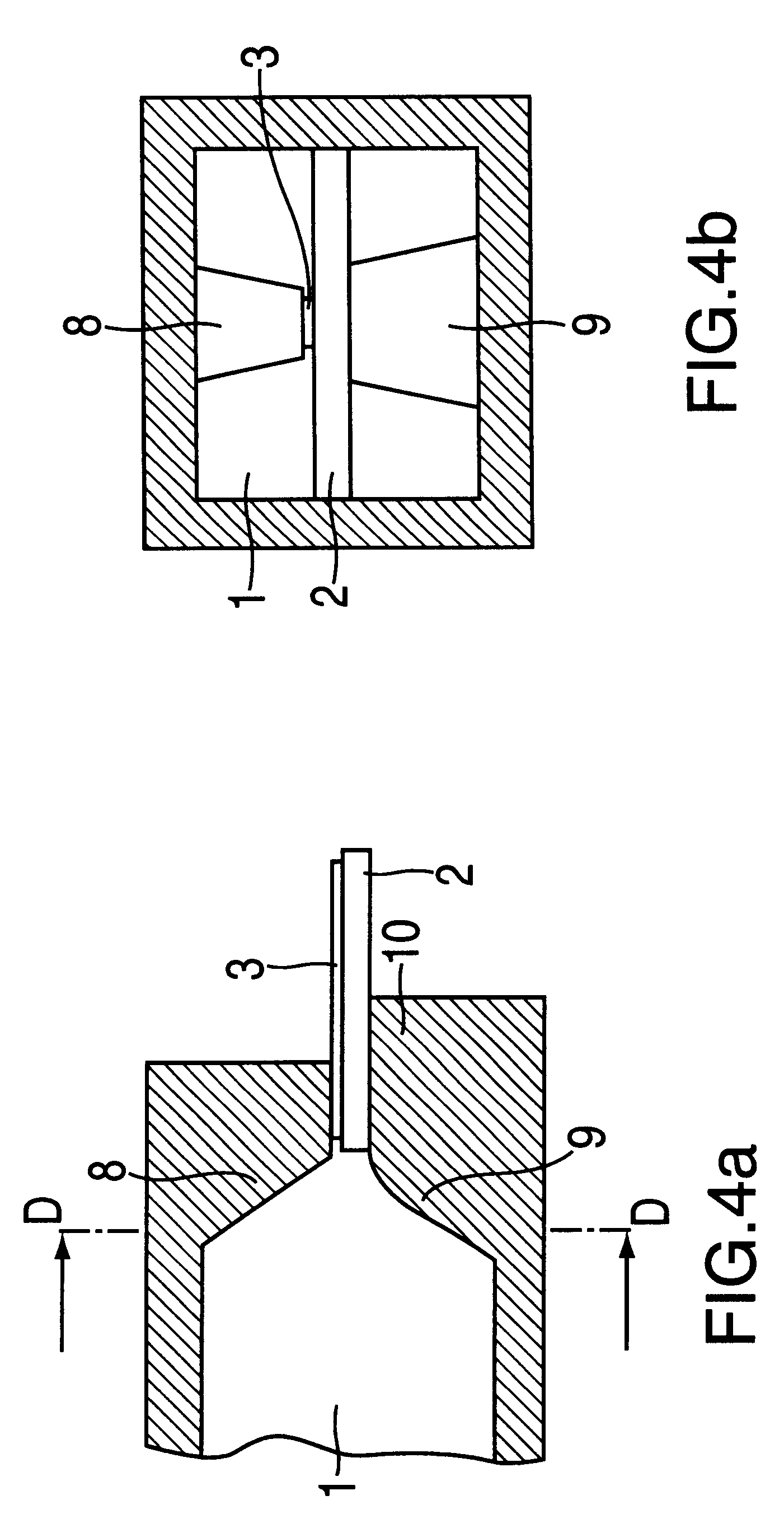Transition from a waveguide to a strip transmission line
a technology of transmission line and waveguide, which is applied in the direction of electrical equipment, multiple-port networks, coupling devices, etc., can solve the problems of ridge breaking off from the waveguide wall, manufacturing difficulty, and relatively expensive conventional transition from waveguide to striplin
- Summary
- Abstract
- Description
- Claims
- Application Information
AI Technical Summary
Problems solved by technology
Method used
Image
Examples
Embodiment Construction
In the following, like references numerals refer to like parts.
In FIG. 1a, a cross section through a waveguide 1 is depicted, which transitions onto a stripline 3 supported by a substrate 2. For the transition from waveguide 1 to stripline 3, there is a ridge 5 on the wall of the waveguide 4 across from the stripline 3, the ridge running in the longitudinal direction of waveguide 1 and its height increasing in the direction of the stripline 3 in steps. This ridge 5, which forms a cross-section transformation, is bonded to stripline 3 at the point which forms the smallest waveguide cross section. Bonding can take place in various ways. For example, substrate 2 with stripline 3 can, as can be seen in FIG. 1a, be inserted into waveguide 1 below ridge 5 so that ridge 5 lies against stripline 3 and can be bonded to it through soldering or gluing. Ridge 5 can also be bonded via a conductive ribbon to stripline 3 which terminates in front of waveguide 1.
In FIG. 1b, a cross section A--A thr...
PUM
 Login to View More
Login to View More Abstract
Description
Claims
Application Information
 Login to View More
Login to View More - R&D
- Intellectual Property
- Life Sciences
- Materials
- Tech Scout
- Unparalleled Data Quality
- Higher Quality Content
- 60% Fewer Hallucinations
Browse by: Latest US Patents, China's latest patents, Technical Efficacy Thesaurus, Application Domain, Technology Topic, Popular Technical Reports.
© 2025 PatSnap. All rights reserved.Legal|Privacy policy|Modern Slavery Act Transparency Statement|Sitemap|About US| Contact US: help@patsnap.com



